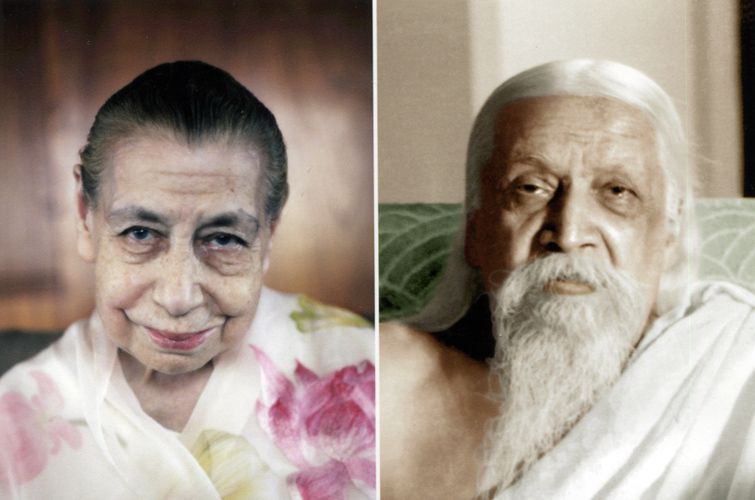
The Mother
Sri Aurobindo’s spiritual collaborator, the Mother was born in Paris on February 21, 1878. Mirra (The Mother) was spiritually conscious from her early childhood. She spontaneously followed an inner discipline which was accompanied by numerous psychic and spiritual experiences. She took interest in literature, philosophy and practiced painting, music. She had remarkable capacities in the field of occultism. In 1906 and 1907 the Mother voyaged to Tlemcen, Algeria, where she studied occultism for two years. Returning to Paris, she founded a group of spiritual seekers. Between 1911 and 1913 she gave many talks to various groups in Paris.
She first met Sri Aurobindo in 1914, and at once recognized in him the figure of the great guide of whom she had repeated visions. She remained in Pondicherry for eleven months helping Sri Aurobindo in the publication of the Arya. Because of the war, she had to return to France. After a stay of four years in Japan, she returned to Pondicherry on April 24, 1920, to resume her collaboration with Sri Aurobindo in his spiritual work and never left Pondicherry again. With her arrival the number of disciples around Sri Aurobindo gradually increased. This informal grouping eventually took shape as the Sri Aurobindo Ashram.
From 1926, when Sri Aurobindo withdrew into silence, she was in charge of the Sri Aurobindo Ashram in Pondicherry and all its concerns, giving great attention to the physical and spiritual development of each ashramite as well as to the development of each collective service, each commercial unit and an international school.
She launched the project of Auroville in 1968.
Sri Aurobindo
Born on August 15, 1872, Sri Aurobindo was sent at the age of seven to England to receive western education. He was a scholar par excellence and mastered his subjects first in London, then at Cambridge. At the age of 21 he returned to India and spent 13 years in the administration of the state of Baroda. In 1906, he went to Calcutta as Principal of the Bengal National College and openly joined the freedom movement of India, of which he became one of the undisputed leaders. His main demand was for total Swaraj and nothing short of it. In 1908, he was accused of sedition and conspiracy and put in prison for one year. This period proved to be a turning point. He did intensive inner sadhan which led to a number of spiritual experiences.
After leaving the Alipore jail he continued with his political and journalistic activities; then, in answer to an inner call, he withdrew from political life.
Sri Aurobindo arrived in Pondicherry on April 4, 1910. After four years of silent yoga, he started in 1914 a philosophical monthly magazine called Arya in which most of his major works were published: The Life Divine, The Synthesis of Yoga, Essays on the Gita, On the Veda, The Human Cycle, The Ideal of Human Unity and The Foundations of Indian Culture. In 1926, he withdrew from outer contacts, though he kept up a huge correspondence with his disciples. He resumed the writing of his major literary creation, the epic poem, Savitri – A Legend and a Symbol.During this period, he gave priority to the work of bringing down a new force, consciousness and light which he called the Supramental. This lasted until his passing away in 1950. He entrusted the Mother with continuing the work he had undertaken.

Recent Comments